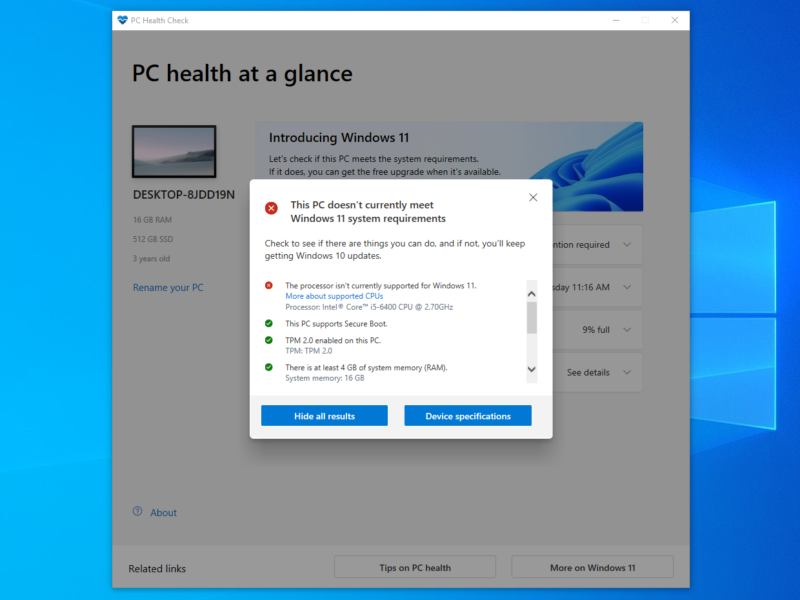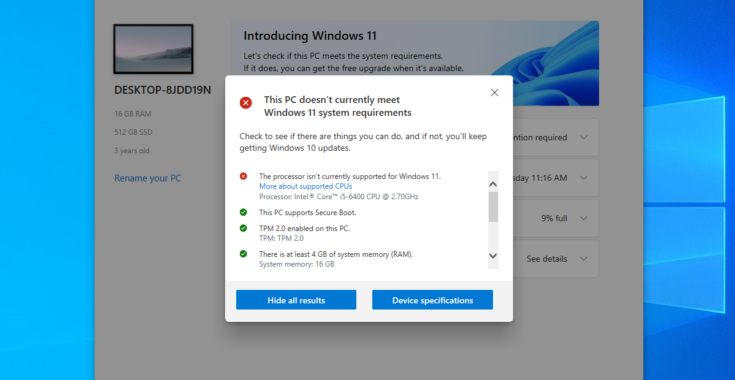
Andrew Cunningham
When it announced Windows 11 and its strict new hardware requirements, Microsoft also released a PC Health Check tool that would analyze your hardware and tell you whether your computer could upgrade to Windows 11. The problem is that the app wouldn’t tell you why your computer failed the test, leading some people with relatively new PCs to believe that they wouldn’t be able to run the OS without hardware upgrades.
A new version of the PC Health Check app, available to anyone who signs up for a Windows Insider account, fixes that problem. In our testing, it’s still pretty bad at guessing the approximate age of the PC that it’s running on, but it at least presents more detailed information when it’s telling you that you won’t be able to upgrade to a new OS.
The new version of the Health Check app makes recommendations if your PC has easily fixable compatibility problems, like if there’s a firmware TPM module that simply isn’t enabled, if Secure Boot is turned off, or if you need a RAM or disk space upgrade. But for more serious problems, like a processor that isn’t on one of Microsoft’s compatibility lists, your only options are to upgrade to a supported processor (not always an option but possible for some AMD Ryzen desktops in particular), replace the computer, continue running Windows 10, or run an “unsupported” Windows 11 install that may or may not receive updates going forward.
Pre-built PCs with supported processors generally have already enabled the security features Windows 11 is asking for, since Microsoft makes the big PC companies adhere to more strict hardware and configuration guidelines before it will let them sell Windows PCs. The bigger problem is custom-built PCs, which often have these security features turned off by default and don’t always make it clear how to turn them on. One solution might be to install a newer BIOS update—many of the motherboard makers are changing their default settings in recent BIOS versions to support Windows 11 out of the box.
Windows 11 begins rolling out to supported PCs on October 5.
Listing image by Microsoft



